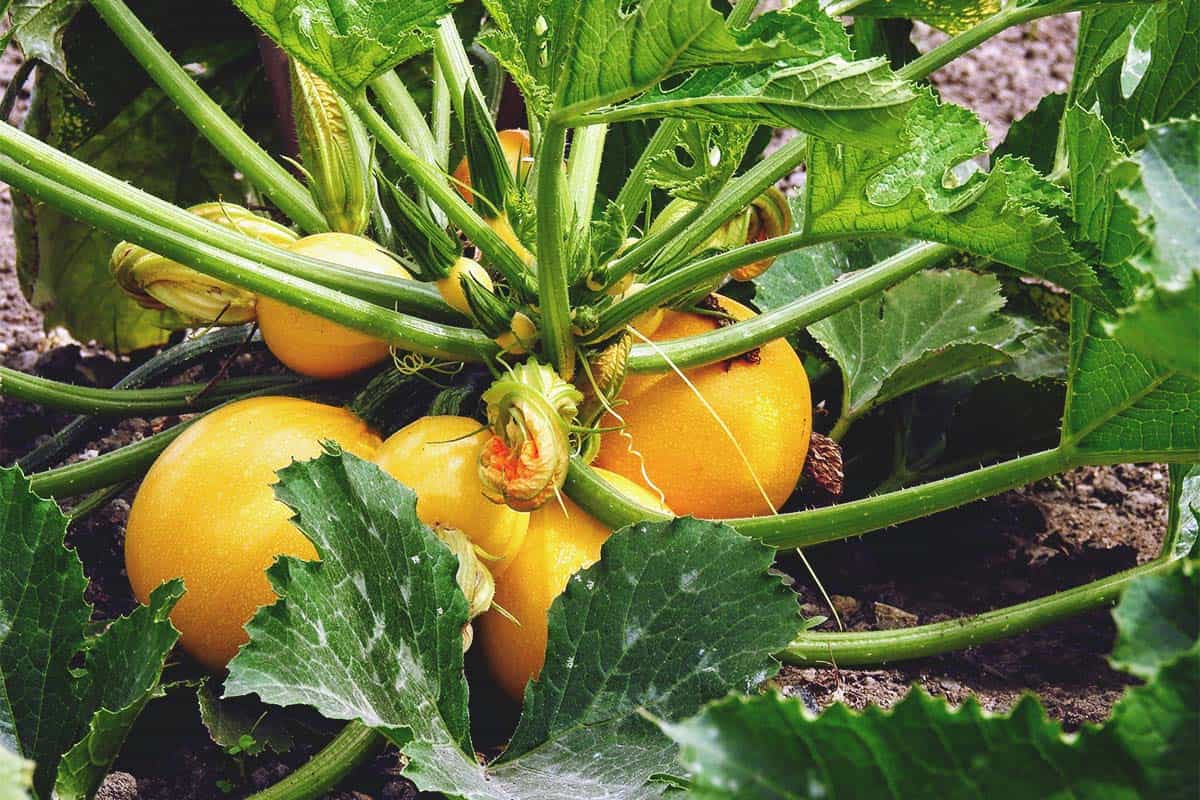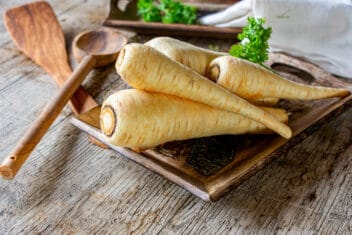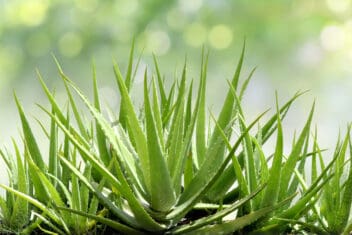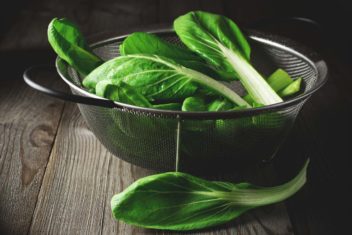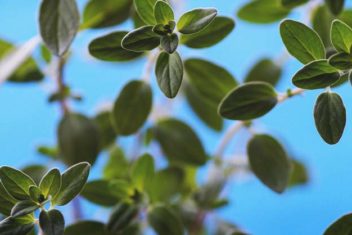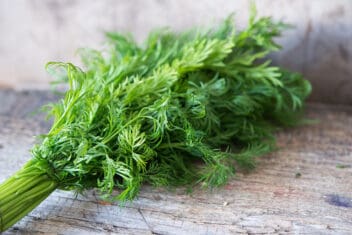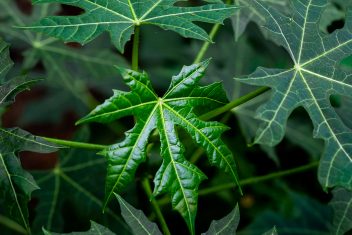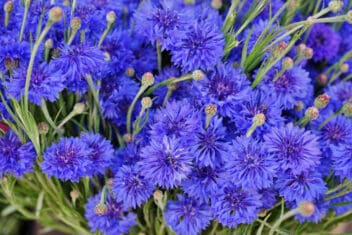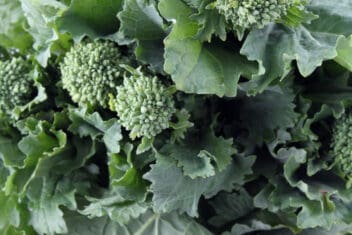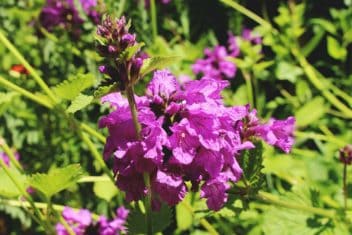If you aren’t growing summer squash, why not? It’s not too fussy, there are so many varieties, and you can cook it in an endless number of ways. Not to mention how much fruit you get off one plant.
You may have heard people complain that they are overrun with summer squash come July. It’s a seriously prolific crop, and not just with fruit, either. You can eat the abundant blossoms and leaves.
Once you’re done digging into your summer bonanza, you can eat the seeds and save some to grow next year’s garden.
Ready? Here’s how to make the magic happen:
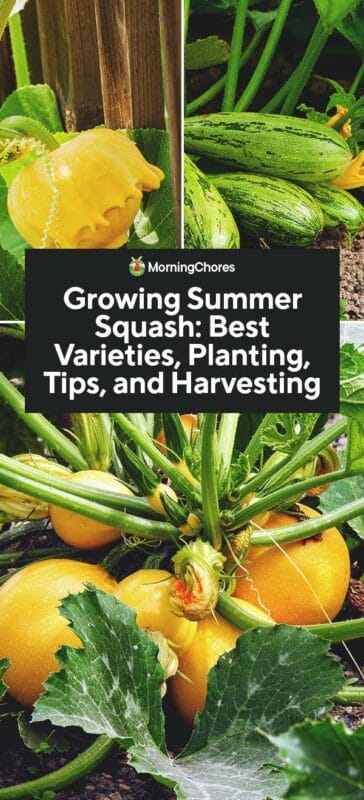
Best Summer Squash Varieties
First of all, are you wondering what sets summer squash apart from winter squash? Summer varieties are generally harvested when they’re immature. Think of the soft skin of a young zucchini compared to the hard outer shell of a pumpkin.
Have you heard the expression “So many books, so little time”? Well, I kinda feel that way about summer squash! There are a ton of different varieties out there.
Some varieties are bushy and will take up more space. Others are viney and can easily be trained to climb vertically.
Whether you want something small and sweet or large and robust, there’s a squash out there for you. Here are a few types:
Cousa
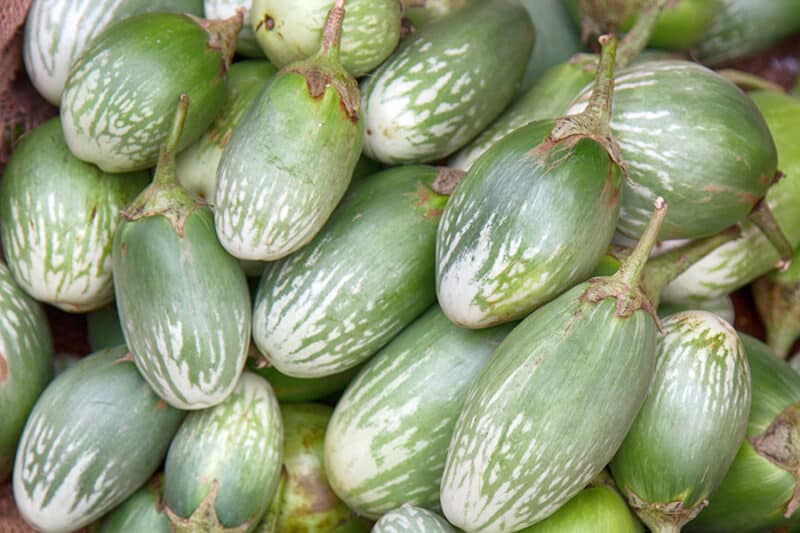
Cousa are sometimes referred to as Middle Eastern or Lebanese squash. This variety is blocky or squat in shape and great for stuffing, grilling, or stir-frying. It also makes tasty pickles.
‘Magda’ has a sweet, nutty flavor and only takes 48 days to maturity.
Crookneck
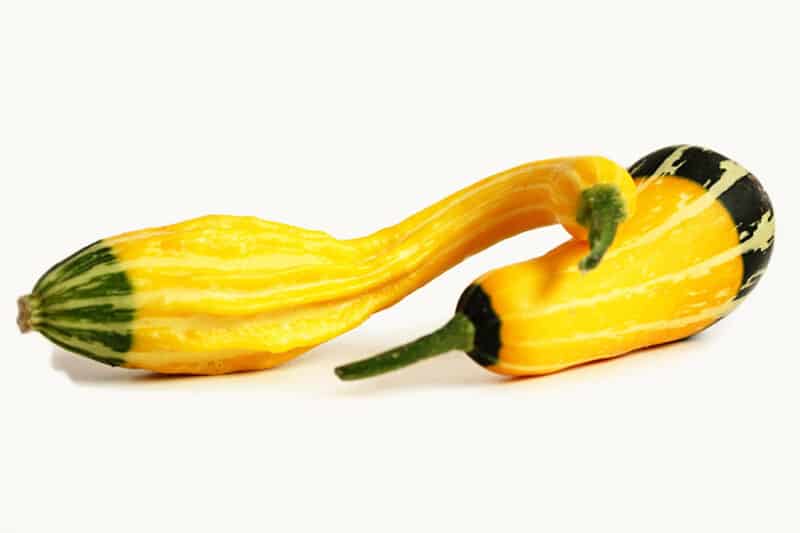
The classic yellow squash with warts and all. A favorite in the Vanorio household, this type has a bulbous base and narrow, curved neck.
It has a buttery flavor and a firm texture that stands up well on the grill. I also love them raw in salads.
Pick them when they’re small before they get their characteristic bumps. This open-pollinated variety will be producing squash for you in 58 days.
Tatume
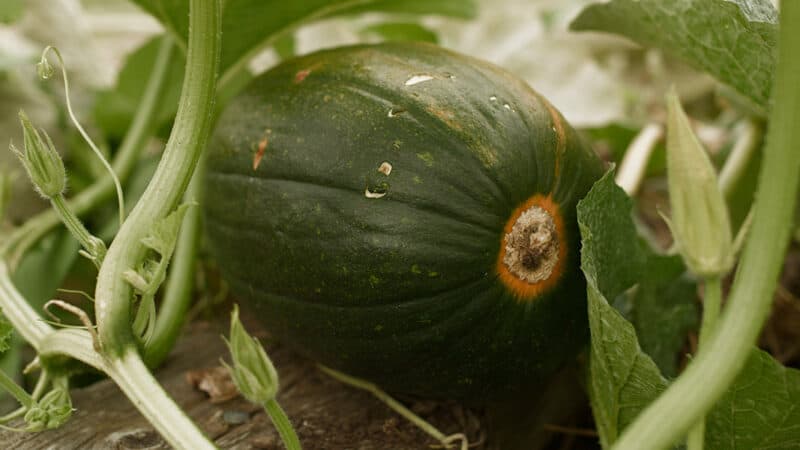
Also known as calabacita or tatuma squash, tatume is a Mexico native that thrives in hot climates. It’s also one of the rare summer squash that can be harvested as winter squash or summer squash.
These squat fruits look kind of like a small watermelon and should be plucked when they’re about the size of a baseball.
Patty Pan
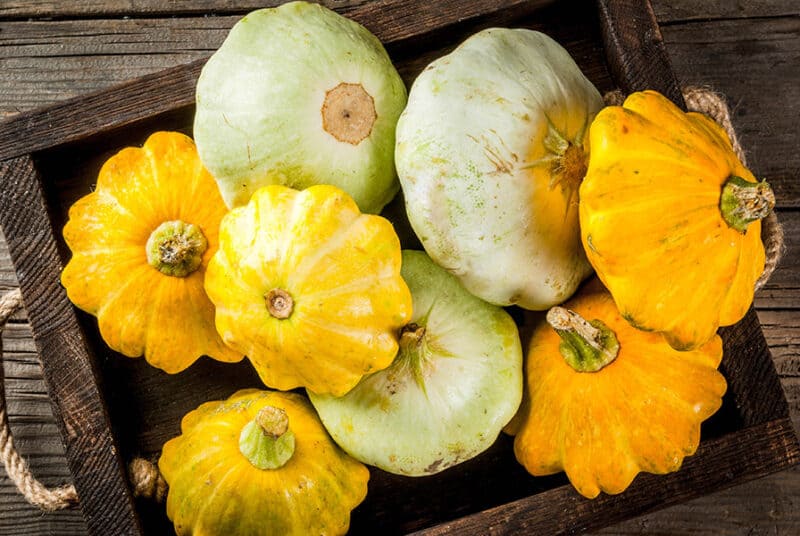
Patty pan, also called Sunburst, Button or pattypan squash, comes in orange, yellow, white, and green varieties. They’re small, round, and shallow, with scalloped edges.
‘Benning’s Green Tint‘ is the classic patty pan variety and is ideal for stuffing. The blossoms from the plant are great for pan-frying, as well. These take 57 days to harvest.
Straight Neck
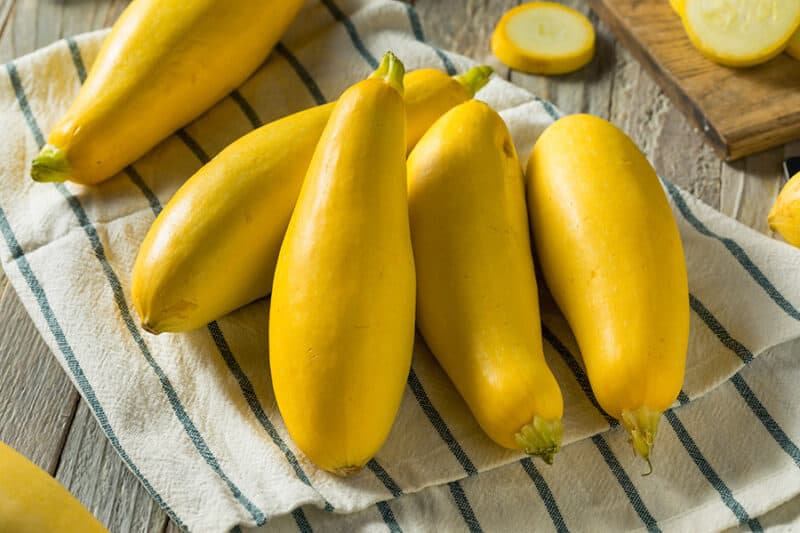
As you probably guessed, straight neck squash has a straight neck, rather than curved. They have a mild flavor and a short growing season.
‘Early Prolific’ is ready 42-56 days after planting with tasty 6-inch fruits.
‘Zephyr’ has faint white stripes and a green blossom end. It has firm, nutty flesh and is ready 54 days after planting.
Zucchini
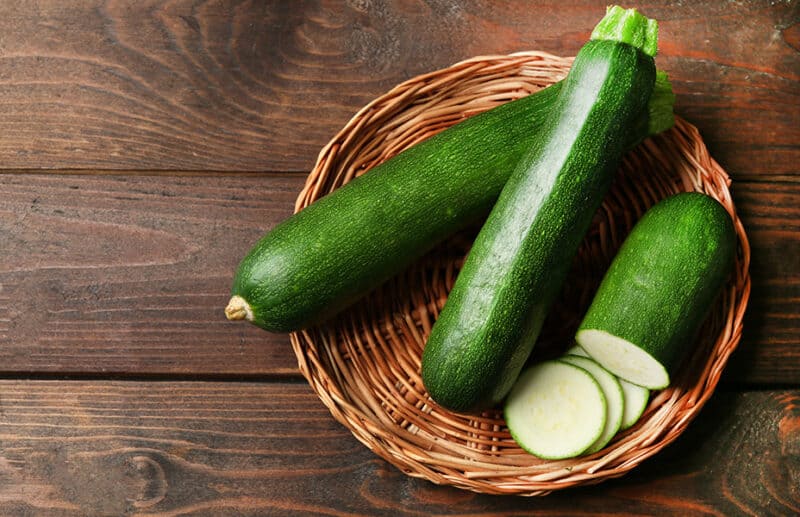
The classic summer squash, zucchini come in different shapes and sizes, including round, green, and yellow.
‘Eight Ball’ is a fun green, round zucchini about the size of a pool cue ball. Great for stuffing. Matures in 50 days.
‘Goldmine’ is a beautiful yellow zucchini with pale white stripes. It’s particularly prolific and matures in 50 days.
‘Raven’ is a hybrid zucchini is such an easy plant to grow. It’s hardy and high yielding of slender dark green fruit that matures in only 48 days from planting.
Costata Romanesco
My family has been growing this Italian heirloom for several generations. The taste is exisite and it produces large male flowers which are great dipped in batter and fried.
Costata Romanesco matures in 52 days.
Planting Summer Squash
Summer squash needs lots of sun and loves the heat. They are heavy feeders and need fertile soil with a pH of 5.8–6.8. Squash loves compost, so work in plenty while planting. Most types grow well in USDA Zones 3-10.
You can start seeds in flats, direct sow in the ground, or in a container.
To get a jump on the season plant seeds inside four weeks before your last frost date. Sow them in three-inch peat pots or 18 pot flats in a soil-less medium. Keep the seeds moist.
Transplant seedlings or purchased plants once all danger of frost has passed.
In the garden, space plants or seeds 18 inches apart in rows three feet apart. This will allow them to receive plenty of air circulation.
Another popular way to plant them in to sow seeds in hills of mounded soil that are four feet apart. Plant three seeds per hill.
Protect Young Plants
To help retain heat and deter insects, cover your seedbed or transplants with a row cover. Remove the row cover when the plants start to make blossoms. They require insect pollination.
If you have pests in your garden, leave the row cover in place, but hand pollinate your plants so that they’ll produce.
Container Planting
If you are an urban farmer or even a patio gardener you will be glad to know that bush varieties do well in containers. You just need to have the right sized container.
Squash needs a bigger container that is at least five gallons. Containers made for small trees or bushes work well.
One advantage of a container is that you can fill it with rich soil. Use plenty of aged compost mixed with potting soil and vermiculite.
As with most containers, make sure you check the moisture level every day and water if the soil feels dry.
Vertical Gardening
If you have a small suburban garden or are a student of the Square Foot Gardening method, then you can grow varieties that like to produce long vines vertically. To do this you will need to build a sturdy trellis.
Use sturdy trellising as the squashes can become heavy. Welded wire fencing works well. You can also make a trellis out of one by lumber in the shape of an arbor for them to climb up.
Succession Planting
Squashes are susceptible to mildews and squash bugs and, in my area, it’s easiest for me to cull the plant rather than fight a losing battle. The disease often affects plants in the later stage of their life, so I have usually already harvested many fruits.
To deal with these problems I succession plant. I plant squash every two weeks. Not always the same variety but whatever I’m in the mood for. Since squash is relatively quick growing I can plant through early August and have squash till frost.
Caring for Summer Squash
Once you get them in the ground, your plants will need some attention to get the biggest harvest possible.
Fertilizer
Squash is a hungry plant. I plant my squash where I have worked in well-rotted manure the fall before. In addition, I water with a diluted fish emulsion when the plants are young.
When the leaves become larger and the plant starts to fruit I foliar feed in the early morning every week with fish emulsion or a seaweed mix.
Water
Squash is not only hungry, but it’s also a thirsty plant. Keep the soil moist. That translates to anywhere from 1-2 inches of water a week depending on the heat and sun in your area.
It’s best to use drip irrigation and not overhead watering devices. Overhead watering spreads fungal diseases that squashes are prone to.
Problems and Solutions for Growing Summer Squash
Summer squashes are one of those plants that, unfortunately, gets attacked by a variety of bugs and diseases.
Powdery Mildew
This disease is a problem all over the United States but can be particularly troublesome in the south where there is high heat and humidity.
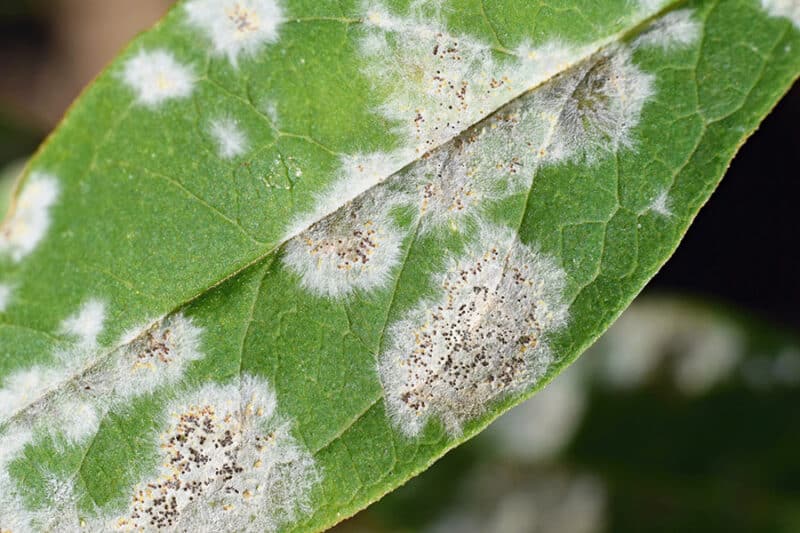
Powdery mildew is a fungus that looks like white blotches on your plant’s leaves. It prevents them from getting energy from the sun and causes the leaves and in some cases the whole plant to die.
Prevent powdery mildew by using drip irrigation, allowing enough space for good air circulation and buying resistant varieties.
Neem oil can help inhibit the fungus.
Blossom End Rot
Blossom end rot shows up as brown spots at the end of growing summer squash fruits. These spots eventually turn mushy and black. It’s caused by a lack of calcium in the plant, but dumping a bunch of calcium into your soil won’t help.
First, test your soil to see if it lacks calcium. If so, add some calcium chloride or calcium sulphate. Then, you need to be sure that your plant is getting enough water to move the calcium into the plant.
All the calcium in the world won’t help if the plant isn’t getting the water it needs to take up the calcium.
Bacterial Wilt
Bacterial wilt, as the name suggests, causes your entire plant to wilt and eventually die. There is no cure, so if your entire plant suddenly wilts and a big drink of water doesn’t help, you might need to pull it.
Keep pests away, because they help spread this disease.
Downy Mildew
Downy mildew is caused by a fungus that results in green or yellow spots on leaves and sometimes some gray fuzz on the undersides of leaves.
Prevent it by watering at the base of leaves and keep plantes pruned so they have plenty of air circulation. Fungicide containing cyazofamid, fenamidone, or phosphorous acid can help control the disease.
Zucchini Yellow Mosaic Virus
Zucchini yellow mosaic is an incurable disease that can be hard to identify because it shows up in a variety of ways. Leaves may be small or deformed, and they can have a mottled appearance. Fruits may be stunted or can die off.
It’s spread by aphids, so do your best to keep them away. If your plant gets infected, you’ll need to pull it and destroy it.
Cucumber Beetle
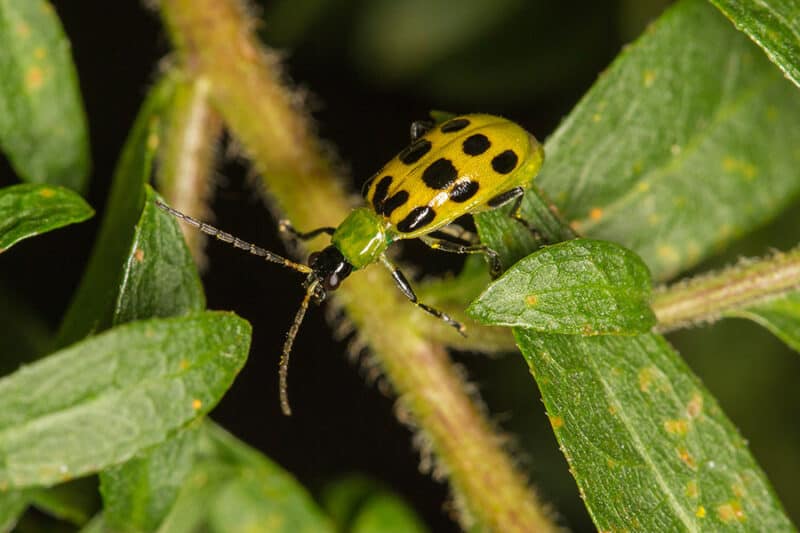
Cucumber beetles are yellow and black striped or spotted bugs that not only nibble on your plants, but they spread deadly diseases like bacterial wilt and mosaic virus.
Use yellow sticky traps and row covers to control them. Once they get to your plant, they can already have spread disease, so insecticides don’t do much good.
Squash Bugs
The squash bug is a common pest in gardens and particularly love growing summer squashes, melons, and cucumber. They suck the sap out of the leaves which causes them to turn brown and die.
To prevent them keep your garden area clean and mow around the borders. Make sure to remove plant refuse in the fall and till in the spring to uncover pupae. Pyrethrin and neem oil sprays will help to control them.
Poor Pollination
Summer squash depends on insects to fertilize the flowers. Having honey bees will help as well as encouraging wild bee species.
Poor pollination can result in no fruits or oddly shaped fruits that do not develop properly.
If you are concerned about a lack of pollinators you may want to hand pollinate.
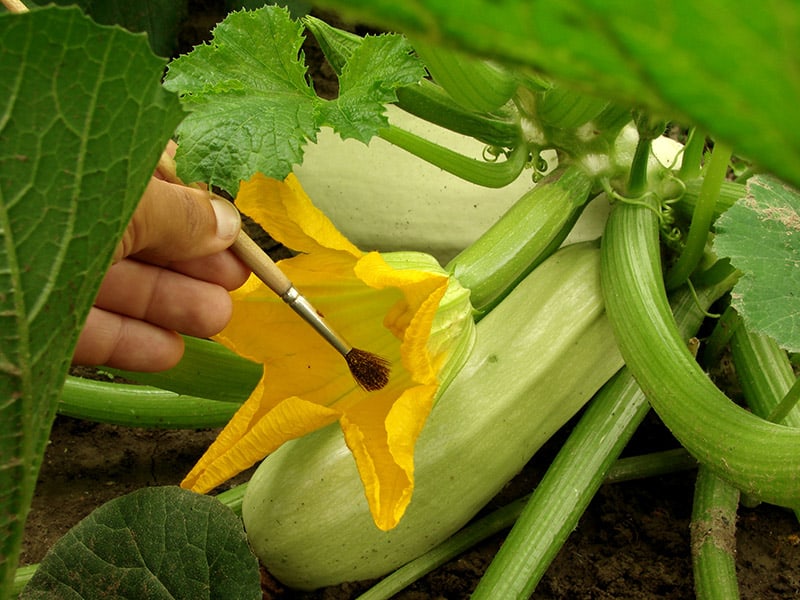
How To Hand Pollinate
- Identify the male flower blossom. He will not have a swollen section under the flower and a single stamen.
- Next, find the tall stamen inside the flower and look for the pollen on it.
- Use a small watercolor paintbrush to gather the pollen.
- Next, go to a female flower. That’s the one with the swollen stem under the flower and a pistil rather than a stamen.
- Touch the pollen inside her flower.
Weeds
Summer squash growing in the garden doesn’t like to compete with weeds. By mulching, you will not only conserve water but help to keep the weeds down. Mulch such as straw or wood chips works well with summer squashes.
You can also use landscaping fabric. Make sure to remove the landscaping fabric at the end of the season.
Harvesting
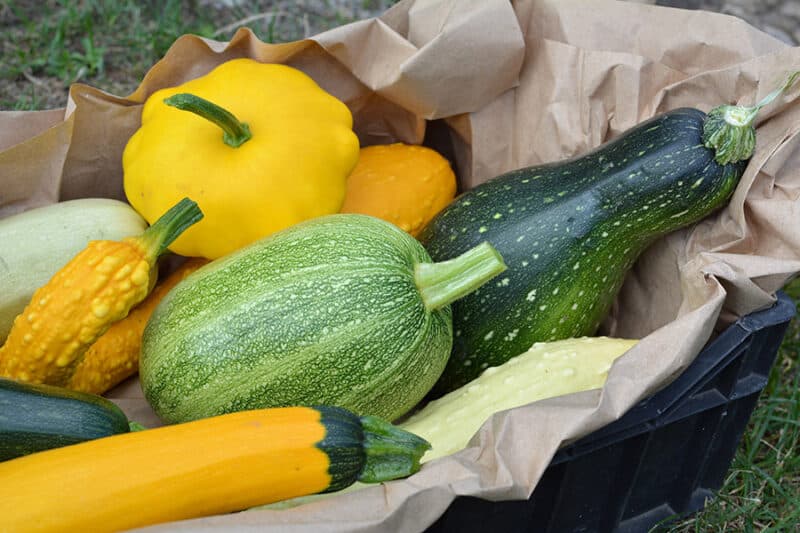
We have all experienced monster zucchini. Those ten-pound mammoth fruits that blended in with the growing summer squash foliage and went poof when we weren’t looking. Ideally, summer squash should be harvested when it is young and tender.
Pick summer squash when they are between four and six inches in length. Use a sharp knife to cleanly cut the squash off at the stem.
Storage
Summer squash doesn’t keep very long. Keep the fruit at 40°F in a fridge with high humidity for up to two weeks. Enjoy as soon as possible for the best quality.
Squash can also be preserved. Freezing and pickling are the best methods. To freeze, Clemson University recommends that you cut the squash into half-inch slices.
Next, blanch the pieces in boiling water for three minutes and then cool in ice water for another three minutes. Drain the squash and package it into freezer bags or freezer containers. Leave a half-inch headspace for expansion.
Squash also makes great pickles and relishes. The National Center for Home Food Preservation has a great squash relish recipe.
Saving Seeds
Another bonus for growing summer squash? They keep on giving!
Saving seeds from squash is easy and you can be growing new summer squash next year without having to buy new plants. Choose an heirloom variety that has gotten too ripe. The seeds will be large and you just have to cut the squash open and scoop them out.
Rinse the pulp off the seeds and let them air dry over a few days.
Keep in mind when saving seeds you need to isolate open-pollinated varieties from each other. Give them a minimum of one thousand feet. You can also just plant one heirloom variety at a time.
Cooking
Summer squash is great for sautéing, baking, raw, and throwing on the grill.
Grilled
Grilled squash is a great summer side dish. You can grill squash in several different ways.
First, slice the squash and place the slices on aluminum foil. Brush with melted butter and season with salt, pepper, garlic, and fresh herbs. I like to use mint. However, basil and thyme are more traditional.
Wrap up the foil and place on grill for twenty minutes until fruits are soft.
Another fabulous way to grill zucchini is to cut it in half. Remove the seeds, brush with butter and season. Then, place flesh side down on the grill. Cook till tender. After cooking you can flip them over and season to taste. We like to sprinkle it with fresh parmesan cheese.
